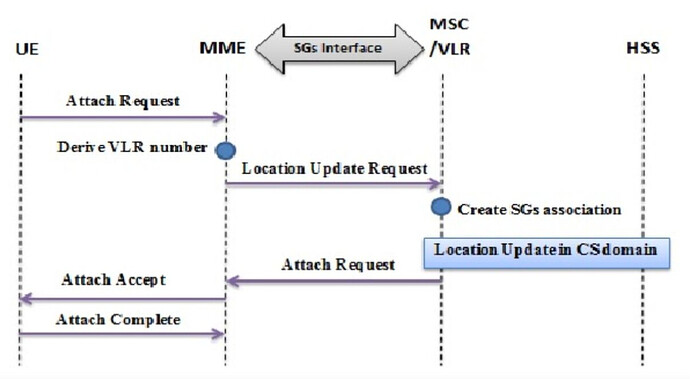I just went to confirm that combined attached in CSFB enhance the call setup time as no need after fallback for legacy attach and LAU , right ?
another related point in LAC-Tac mapping misconfiguration , in this case the MTC fail but MOC can be done normally ?
Hello All.
I have a general query for TAI LAI mapping:
For how many LAC TAI LAI mapping should be there?
Is it okay to use only one LAC for all the TAC in tailaimapping list configuration of the MME?
When an operator deploys its LTE network in a particular region, it divides the whole region into small areas known as tracking areas.
Each tracking area consists of a groups of eNodeBs/cells.
In LTE, a cell can be part of only one tracking area though it can broadcast up to 6 PLMN (first primary and others considered as secondaries).
During S1-setup procedure, eNodeB sends its supported TAI list to MME and MME stores these details.
There are three possibilities at cell level:
- Each cell broadcasting same TAC and same PLMN.
- Few cells broadcasting different TACs (consecutive or non-consecutive TACs) but broadcasting same PLMN
- Combination of TACs and Different PLMNs.
Based on these above details, MME maintains different types (type 00, 01 and 10) of TAI list. The purpose of maintaining different types of TAI list is to configure TAI list at UE through different ways. Each type uses different format to prepare TAI list. For the UE, it is just a list of TAI and there is no change in TAU procedure because of different types.
When an UE attaches to the LTE Network in combined attach mode, network registers the UE for both PS as well as CS services .
MME assigns only one Location Area Identifier to UE during the attach procedure along with TAI list in the attach accept message. This way i believe only single location area identifier can be assigned to an UE at a time.
Check this document, for example Section: 5.1A TAI list and LAI allocation
But if it is okay to configure only one lai to all the TAC in the mme TAILAIMAPPING?
I think it is ok for 1 LAC with some TAC, as 3G is underlaid layer, 4G is overlaid.
1 tac is mapped to 1 lac, mme can find suitable msc to update location for UE in CS domain.
In the combined Attach process, the mobile indicates in the Attach request to the MME the
support CSFB functionality, the MME informs the MSC Server that there was an attach on the LTE network, sending a Location Update Request message, which activates the SGs association with the MSC/VLR, thus having a record also in the CS domain. Upon receiving the request, the VLR performs the Location Update procedure. After that, the identification of the MME and SGs interface connection is associated. In the attach request, the MME sends an LAI “dummy”, which is used in CS processes, to identify the location of the mobile in the LTE network. The Attach Combined is transparent to the rest of the CS network.
Let’s discuss combined attach/detach/TAU in 4G networks with CSFB to 3G!
Combined attach, combined detach and combined tracking area update are mobility management procedures in LTE networks that involve both the EPS (Evolved Packet System) and the CS (Circuit Switched) domains. They are used to optimize the network resources and the user experience by reducing the signaling overhead and the latency.
-
Combined attach: This procedure allows the UE (User Equipment) to attach to both the EPS and the CS domains simultaneously, by sending a single attach request message to the MME (Mobility Management Entity). The MME then forwards the request to the SGSN (Serving GPRS Support Node) and the MSC (Mobile Switching Center) via the SGs interface. The UE receives a single attach accept message from the MME, which contains the EPS and the CS parameters. This procedure saves the radio resources and the time that would be otherwise spent on separate attach procedures for each domain.
-
Combined detach: This procedure allows the UE to detach from both the EPS and the CS domains simultaneously, by sending a single detach request message to the MME. The MME then forwards the request to the SGSN and the MSC via the SGs interface. The UE receives a single detach accept message from the MME. This procedure saves the radio resources and the time that would be otherwise spent on separate detach procedures for each domain.
-
Combined tracking area update: This procedure allows the UE to update its location in both the EPS and the CS domains simultaneously, by sending a single tracking area update request message to the MME. The MME then forwards the request to the SGSN and the MSC via the SGs interface. The UE receives a single tracking area update accept message from the MME, which contains the EPS and the CS parameters. This procedure saves the radio resources and the time that would be otherwise spent on separate tracking area update procedures for each domain.
Therefore, combined attach, combined detach and combined tracking area update are significiant procedures for LTE networks, as they enable the UE to access and manage both the EPS and the CS domains efficiently and effectively.
Source: ![]()
